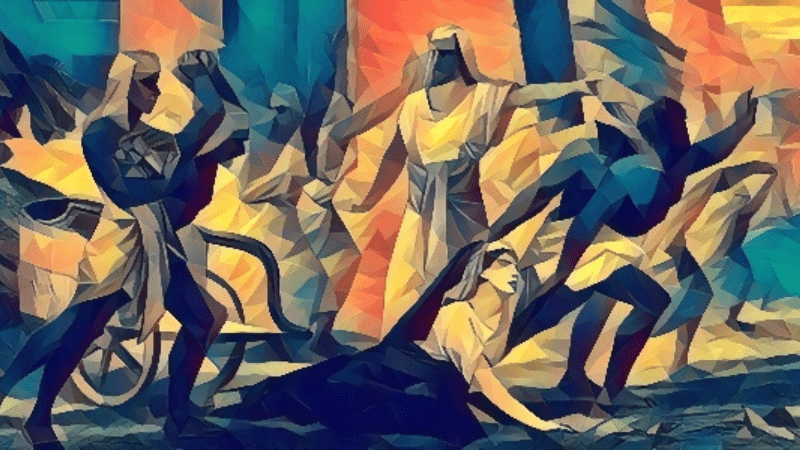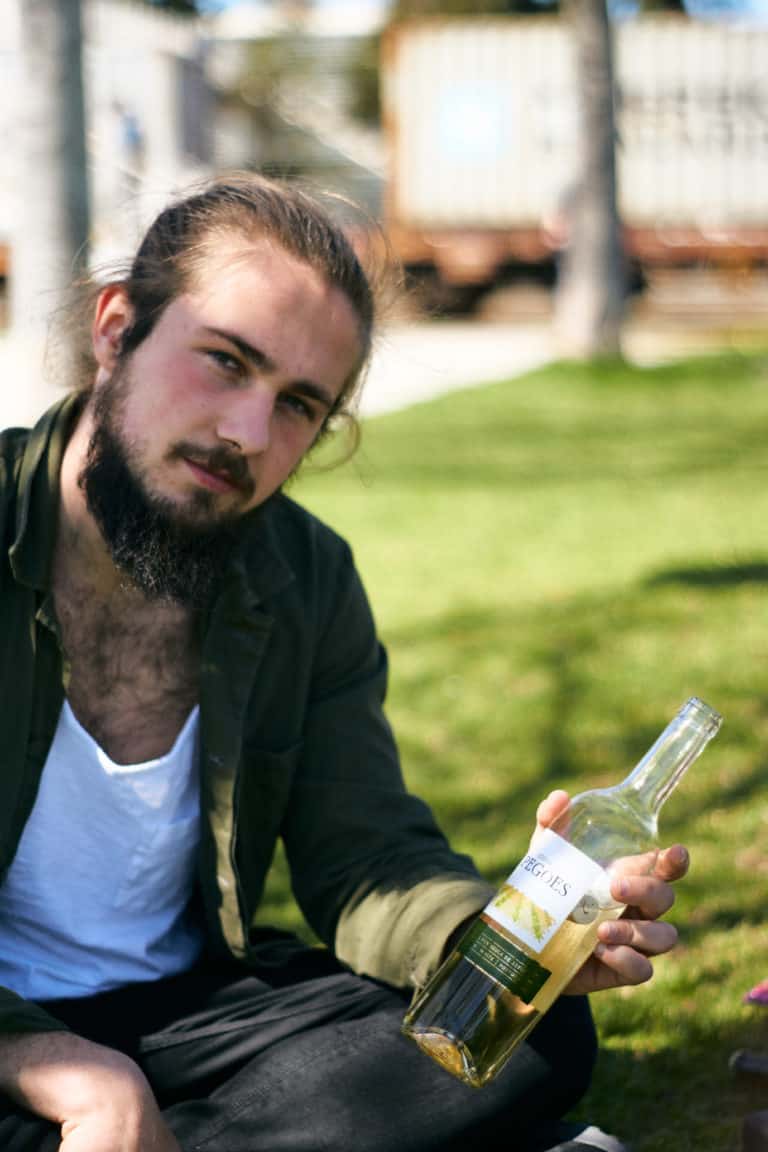Philosophers Who Were Exiled or Killed
Philosophers have always had a contentious relationship with authority. From Socrates' questioning of the gods to Jean-Paul Sartre's existentialist musings, these thinkers have not shied away from challenging the status quo. But this has often come at a price. Some philosophers have been exiled from their homelands or killed for their beliefs. Here are some of the most notable examples.
Note: Stoic philosophers are excluded here, as we have a separate article for you for this: Stoics who were exiled or killed
Zeno of Elea: killed 458 BC.
According to Valerius Maximus, Zeno of Elea was tortured and murdered by the tyrant Nearchus after he bit off one of his ears. Zeno of Elea (not Zeno of Cition!) was a pre-Socratic philosopher famous for his paradoxes, which he used to show the contradictions in arguments that presuppose the existence of infinity.
Diogenes of Sinope: banished in the 4th century BC.
Diogenes of Sinope was a Greek philosopher who lived in the fourth century BC. He was known for his radical beliefs and unconventional lifestyle. He believed that all property should be communal and that people should live simple, austere lives. For these reasons he was banished from his hometown Sinope.
Socrates: sentenced to death in 399 BC.
As described in Plato's Phaido, Socrates drank hemlock in the company of his friends after being sentenced to death for corrupting the youth.
Socrates was one of the most famous philosophers of ancient Greece. He was known for his Socratic Method, a form of questioning aimed at eliciting the truth from his students. Socrates was also notorious for his criticism of the Greek government.
Anaxarchus: killed 320 BC.
The tyrant Nicocreon is said to have pounded Anaxarchus in a mortar with iron pestles, and Anaxarchus is said to have made fun of it. Anaxarchus belonged to the school of thought called the Cynics.
Hypatia: killed in 415
Hypatia was lynched by a mob of Christians. She was a philosopher who lived in Alexandria in the 4th century AD. She came from a wealthy and influential family and studied mathematics, astronomy and philosophy. She also taught these subjects at the famous Alexandrian school known as the Museum. Hypatia was a gifted writer and published works on philosophy, mathematics and astronomy. She was known for her wisdom and erudition and was respected by both pagans and Christians - but unfortunately not by all Christians.
St. Augustine: died 430
The city of Hippo was besieged during the reign of Genseric. St. Augustine died when the city was attacked by the Vandals. The exact cause of death is not known, but it is believed that he starved to death, as did many others when the town was cut off from supplies.
Saint Augustine was not actually killed, nor was he killed for personal beliefs or actions. Nevertheless, death remains associated with violence.
Boethius: killed in 526
The Ostrogoth king Theoderic, who employed Boethius at the time, ordered him to be strangled. The reason for the murder is not clear, but it was probably due to Boethius' involvement in a conspiracy. Boethius was a philosopher who wrote on a wide range of subjects, including logic, theology, and music.
Abraham ibn Daud: killed in 1180
Abraham ibn Daud became a martyr. Abraham ibn Daud was a well-known theologian and philosopher in the 12th century. He was born in Muslim Spain and his writings influenced both Jewish, Christian and Muslim thinkers. He was brutally murdered by a mob of fanatical Muslims who accused him of heresy. His martyrdom only served to spread his writings and teachings throughout the world.
Siger of Brabant : murdered in 1284
Siger of Brabant was a 13th century Belgian chancellor and nobleman who was fatally stabbed by his scribe.
The stabbing was sudden and unexpected. It is unclear what prompted the employee to kill Siger.
Jan Hus: killed 1415
Jan Hus was a Czech reformer who was executed at the Council of Constance. He was born in 1369 in Husinec, in the Bohemian Crown. Jan Hus wanted to return the Church to what he believed to be its true roots. When Rome issued five declarations against his teachings, Hus refused to recant his ideas. As a result, he was excommunicated and finally burned at the stake as a heretic on July 6, 1415.
His death triggered the Hussite Wars, which were led by his followers.
Thomas More: beheaded 1535
Thomas More was executed by beheading in 1535 after falling out of favor with King Henry VIII. Thomas More was known for his intelligence and wit. He was a humanist philosopher and author of Utopia, a book describing an ideal society. More was also a loyal servant of the king, but he could not support the king's decision to break away from the Catholic Church. As a result, he was imprisoned and then executed. His death is considered a martyrdom by many Catholics.
Girolamo Maggi: killed in 1572
Maggi was executed by strangulation on the orders of a prison captain in Constantinople. Maggi had been incarcerated after his arrest during the Turkish siege of Famagusta.
He was a Renaissance scientist who made groundbreaking discoveries in the fields of anatomy and physiology. He was also an avid inventor and designed a number of innovative machines and devices.
Peter Ramus: killed 1572
On August 24, 1572, Peter Ramus was killed in the St. Bartholomew's Day Massacre. This brutal event was a turning point in the French Wars of Religion and had a lasting impact on European intellectual life.
Giordano Bruno: burned in 1600
Giordano Bruno was an Italian philosopher and mathematician who was burned by the Inquisition. His beliefs clashed with those of the Catholic Church, and he was eventually convicted of heresy. Today he is considered a martyr for free thought.
Lucilio Vanini: burned in 1619
Lucilio Vanini was an Italian philosopher who was also burned by the Inquisition. He was an outspoken critic of religion and wrote a number of heretical works. He was known for questioning orthodoxy and being experimental. In 1619 he was arrested and interrogated by the Inquisition. He was tortured and then sentenced to death. He was burned at the stake in January 1622.
Uriel da Costa: committed suicide in 1640
Uriel da Costa was a Dutch philosopher who was excommunicated by the Jewish community. Later he converted to Christianity, but he became disillusioned with the church. This dispute with the church made him enemies. This led to him being attacked by a religious group. After being beaten and kicked by a religious group, he went home and committed suicide by shooting himself.
Algernon Sidney: killed 1683
Algernon Sidney was executed for treason on December 7, 1683. He was found guilty of conspiring against King Charles II. Sidney was a prominent political thinker and a member of the Whig Party.
Marquis de Condorcet: died 1794
The Marquis de Condorcet, a prominent philosopher and thinker during the French Revolution, died in prison. He was sentenced to prison for his ideas and beliefs, which were contrary to those of the government of the time. Even in prison, he continued to write and work on his mathematical philosophy.
Ferdinand Lassalle: died 1864
Ferdinand Lassalle was a German socialist and one of the first leaders of the modern labor movement. Lassalle died young, at the age of only 38 in a duel.
While many details of the duel are unknown, it is clear that Lassalle's tragic end was a result of his participation in this violent act.
Emil Lask: died 1915
Emil Lask was a German philosopher who was a neo-Kantian thinker whose work dealt with the nature of knowledge. Lask became involved in the First World War and fell in the Battle of Galicia, when the Austro-Hungarian armies for which he was fighting suffered a heavy defeat and were driven out of Galicia.
Adolf Reinach: died 1917
Adolf Reinach was a German philosopher who specialized in the philosophy of law. He enlisted in the German army during the First World War and was killed during the First World War at Diksmuide in Flanders.
Reinach's death was a great loss to the philosophical community. He was only 31 years old when he died.
Rosa Luxemburg: killed in 1919
Rosa Luxemburg was a Polish-German Marxist thinker and revolutionary. She was killed during the Spartacus Uprising by the Freikorps, a right-wing paramilitary group. Luxemburg was a leading figure in the German Communist Party. She was also a prolific writer and thinker, authoring a number of important works.
Luxemburg's death was a blow to the socialist movement. She was only 47 years old when she was killed.
There are several places named after her, including a square in Berlin and a university in Wrocław.
Moritz Schlick: shot in 1936
Moritz Schlick was a German philosopher and a leading figure of the Vienna Circle. He was shot by a former student, Hans Nelböck. Nelböck was insane and believed that Schlick had plagiarized his work.
Since he was only 54 years old when he was killed, the world missed much more of Schlick's work.
Gustav Shpet: Executed in 1937
Gustav Shpet was a Russian philosopher born in what is now Kiev, Ukraine. He fell victim to the Great Purge. Originally arrested on March 14, 1935, he was charged with anti-Soviet activities along with several other former colleagues from the State Academy. First, he was exiled after being sentenced to five years of internal exile. He was sent to Tomsk, the first university town in Siberia. There Shpet worked on a new Russian translation of Hegel's work The phenomenology of the mind.
Unfortunately, on October 27, 1937, he was arrested again and charged with membership in a monarchist organization. He was later sentenced to death and on November 16, 1937. executed, which put a tragic end to his life.
Pavel Florensky: shot in 1937
Pavel Florensky was a Russian Orthodox theologian, philosopher, mathematician, natural scientist and engineer. He was shot after being sentenced to death by an extrajudicial NKVD troika after being arrested and tortured by the Soviet secret police. Such a troika, or special troika, was a Soviet process. The People's Commissariat for Internal Affairs consisted of three officials who issued verdicts against people after simplified and brief investigations. And this was done without a public or fair trial - just like in the case of Un Florensky.
Florensky was an important figure in the Russian religious renaissance of the early 20th century. He was also a leading member of the Russian avant-garde art movement. Florensky was only 43 years old when he died.
Antonio Gramsci: died 1937
Antonio Gramsci was an Italian Marxist philosopher, journalist, linguist, writer and politician. He wrote on philosophy, political theory, sociology, history, and linguistics. He was a founding member of the Italian Communist Party. A vocal critic of Benito Mussolini and fascism, he was imprisoned in 1926, where he remained until his death in 1937.
Stanisław Ignacy Witkiewicz: committed suicide in 1939
Witkiewicz committed suicide by taking an overdose of Veronal the day after the Soviet invasion of Poland and attempting to slash his wrists; it was supposed to be a joint suicide with a close friend of his, but she survived the attempt. He is famous for his plays, novels and paintings, in which he often caricatured modernity.
Walter Benjamin: committed suicide in 1940
When the Nazi regime revoked German citizenship from German Jews in 1938, Benjamin was arrested by the French government and held in a prison camp for three months.
Returning to Paris in 1940 (where he had previously lived), Benjamin fled Paris with his sister just one day before the Germans invaded the capital, with orders to arrest him in his apartment. With a travel visa, Benjamin planned to travel to the United States from neutral Portugal.
Records show that he crossed the French-Spanish border safely. But the Franco government had canceled all transit visas and he and his group were to be returned to France by the Spanish police. Awaiting return to Nazi hands, Benjamin killed himself with an overdose of morphine tabletswhile he spent the night in a hotel. The others from his group were allowed to continue their journey and reached Lisbon safely on September 30. It is said that the suicide had shocked the autorotis.
Leon Trotsky: killed in 1940
Trotsky was a political figure in the early days of the Soviet Union. He was born in Yanovka in Ukraine and was originally named Lev Davidovich Bronstein. Trotsky was a Marxist revolutionary and theorist, Soviet politician, and the founder and first leader of the Red Army.
He was murdered by Soviet agent Ramón Mercader in Mexico on Stalin's orders, along with most of his family.
Kurt Grelling: died 1941
Kurt Grelling was a German philosopher, mathematician and poet. He was born in Königsberg, East Prussia. Grelling was known for his work in logic, especially for his discovery of the heterological paradox that bears his name.
He was also one of the founders of analytical philosophy.
Grelling was killed in the Holocaust. He was arrested by the Gestapo in 1942 and taken to the Auschwitz concentration camp, where he died between September 1942 and February 1943.
Edith Stein: died 1942
Edith Stein was a German philosopher and nun. She was born into a Jewish family, but later converted to Catholicism.
She was murdered in the Auschwitz concentration camp. Stein was arrested by the Gestapo and was taken to the Auschwitz concentration camp, where she was murdered in a gas chamber on August 9, 1942.
Georges Politzer: died 1942
Georges Politzer was a French philosopher and journalist. He was born in Budapest, Hungary. Politzer was a leading member of the French Communist Party. He died in the Ravensbrück concentration camp under the Nazi regime.
Today, his work is still relevant and studied at universities around the world.
Mikhail Bakunin: 1943 in exile
Mikhail Bakunin was a Russian revolutionary, philosopher and writer. He is considered one of the most influential figures of anarchism. Bakunin was born to a noble family in Premuchino, Russia. As a young man, he became involved in politics and revolutionary activities and was arrested for his participation in the revolution of 1848. expelled from the country.
Jean Cavaillès: executed in 1944
Jean Cavaillès was a French philosopher and mathematician. Cavaillès was executed by the Gestapo during World War II.
Marc Bloch: executed 1944
Marc Bloch was a French historian. He was one of the founders of the Annales school of historiography. Bloch fought in World War I and World War II and was captured and executed by the Gestapo in the latter.
In short, he was shot by the Gestapo for his work in the French Resistance.
Giovanni Gentile: killed in 1944
Giovanni Gentile was an Italian philosopher, educator and politician. He was a leading figure in the philosophy of fascism. Gentile was born in Castelvetrano, Sicily. He died during World War II while serving in the army.
Gentile was killed by a stray bomb while crossing a street in Florence. The bombing is attributed to communist partisans.
Dietrich Bonhoeffer: Executed in 1945
Dietrich Bonhoeffer was a German theologian and pastor. He was born in Breslau, Germany (now Wrocław, Poland). Bonhoeffer was involved in the German resistance movement against Nazism and was arrested for it. He was hanged by the Nazis in the Flossenbürg concentration camp.
Gerhard Gentzen: died 1945
Gerhard Gentzen was a German mathematician and philosopher. He is best known for his work on the foundations of mathematics, especially for his proof of the consistency of arithmetic.
Gerhard Gentzen was held by Russian forces in a prison camp where he died of malnutrition.
Johan Huizinga: died 1945
Johan Huizinga was a Dutch historian. He was born in Groningen, the Netherlands. Huizinga became best known for his work The Autumn of the Middle Ages.
Johan Huizinga died in De Steeg in Gelderland, near Arnhem, where he was imprisoned by the Nazis.
Miki Kiyoshi: died 1945
Miki Kiyoshi was an eminent Japanese philosopher, literary critic, scholar, and university professor. He studied under Nishida Kitarō and was a prominent member of the Kyoto School.
While Miki got along well with many people throughout his career, he also had strained relations with both Japanese Marxism and the imperial government at various stages of his career.
Although he was not murdered, it is believed that his death was a result of prisoner abusewhich caused great consternation among Japanese intellectuals.
That is why he died in prison; he was sent there after helping a friend escape from the authorities.
Mohandas Karamchand Gandhi (Mahatma Gandhi) - killed in 1948
Gandhi was an Indian independence activist who was also the main figure of the Indian National Congress. He was born in Porebandar, Gujarat, India. He was born in New Delhi on January 30, 1948, by Nathuram Godse, a Hindu nationalist, assassinated. Godse felt that Gandhi showed too much sympathy for Muslims. Gandhi's death triggered great unrest in India.
Richard Montague: murdered 1971
Richard Montague was an American philosopher. He was born in Los Angeles, California. He is considered the founder of formal semantics, the study of meaning in natural language. He committed suicide by jumping off a cliff in Big Sur, California.
He died violently in his own home; the crime remains unsolved to this day. Acquaintances reported that he went to bars and brought people home. On the day of the murder, he apparently brought several people home "for some kind of soirée." He was later found strangled.
Amílcar Cabral: killed 1973
Cabral was a Bissau Guinean and Cape Verdean agricultural engineer, Pan-Africanist, intellectual, poet, theorist, revolutionary, political organizer, nationalist, and diplomat. He was one of Africa's most important anti-colonial leaders.
Amílcar Cabral was assassinated as a result of his political efforts while fighting for the independence of the Portuguese colonies in Africa.
Jan Patočka: murdered in 1977
Jan Patočka was a Czech philosopher who had studied in Prague, Paris, Berlin and Freiburg. He was a student of Edmund Husserl and Martin Heidegger. He never joined the Communist Party. This eventually led to his death. He died of a stroke after being interrogated for eleven hours by the Czechoslovak secret police.
These are just a few of the many philosophers who were banished or killed for their beliefs. It is clear that these thinkers were not afraid to challenge authority, even if it cost their own safety. What these philosophers all have in common is a devotion to truth and a willingness to stand up for their beliefs.
Do you know other philosophers who were banished or killed for their beliefs? Let us know in the comments!







